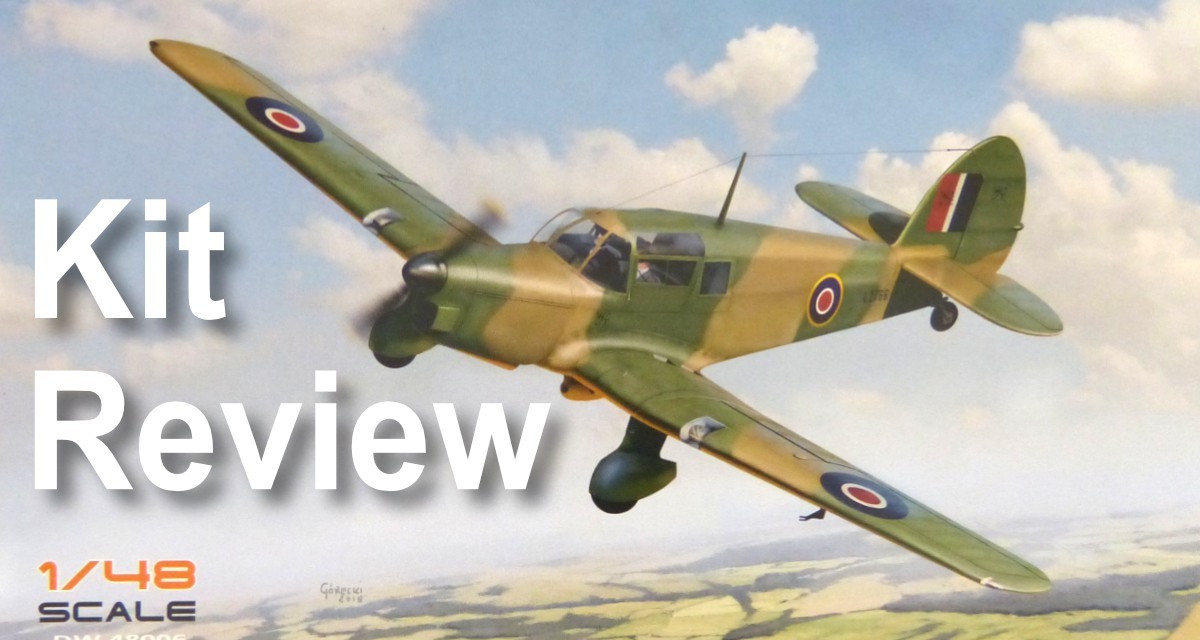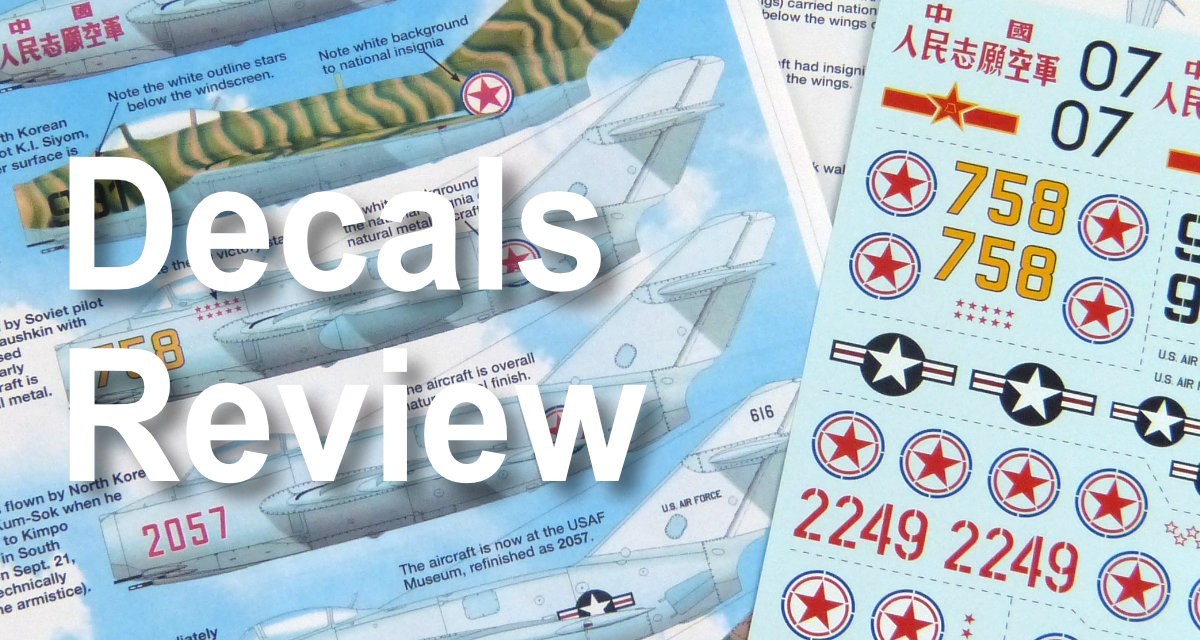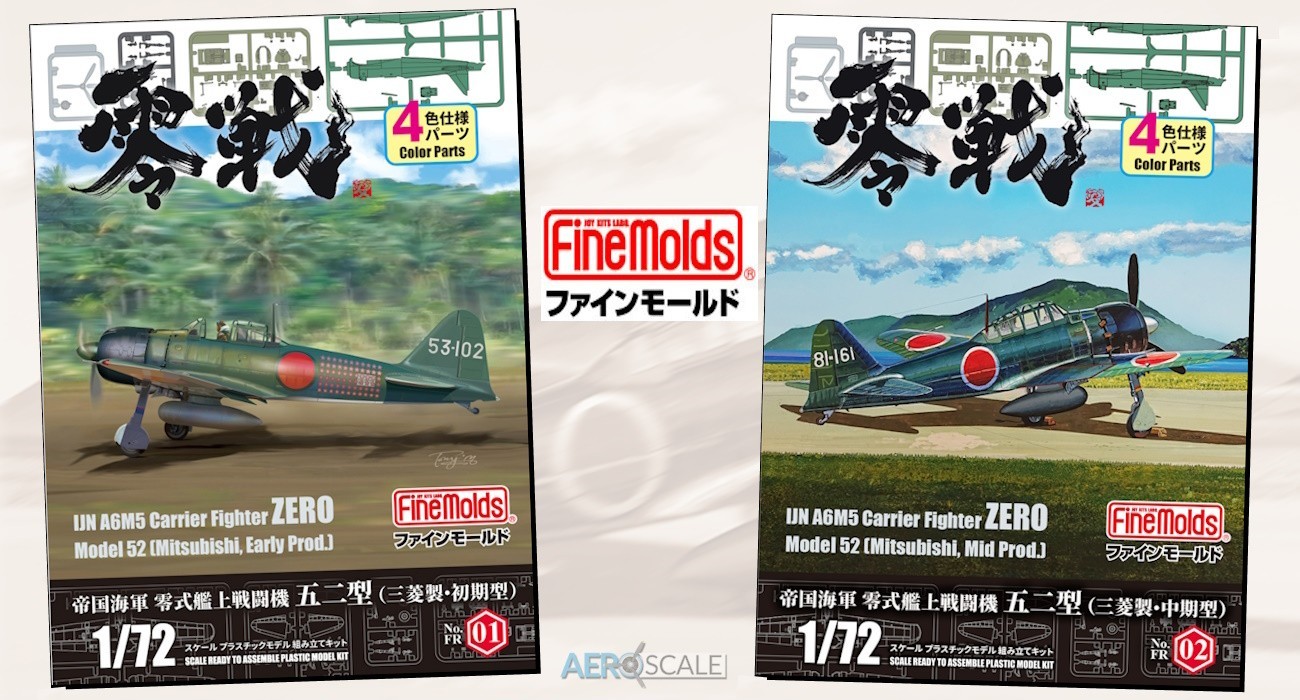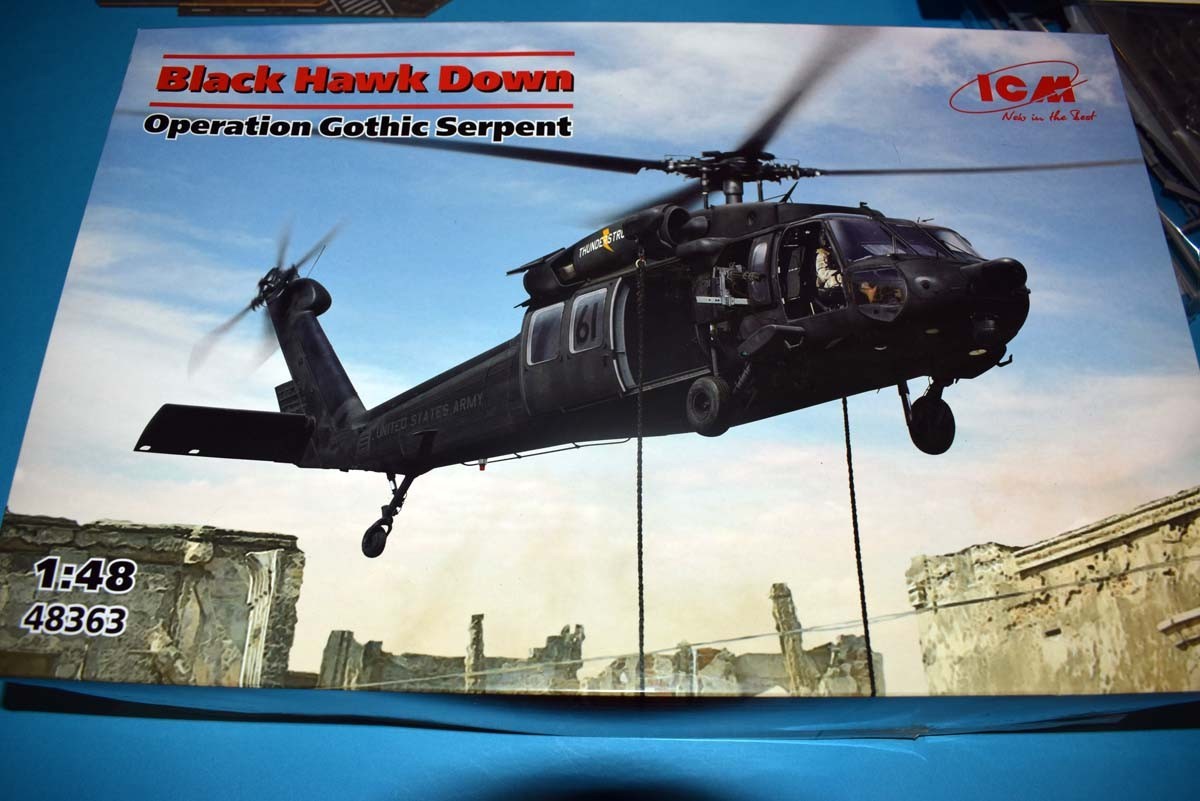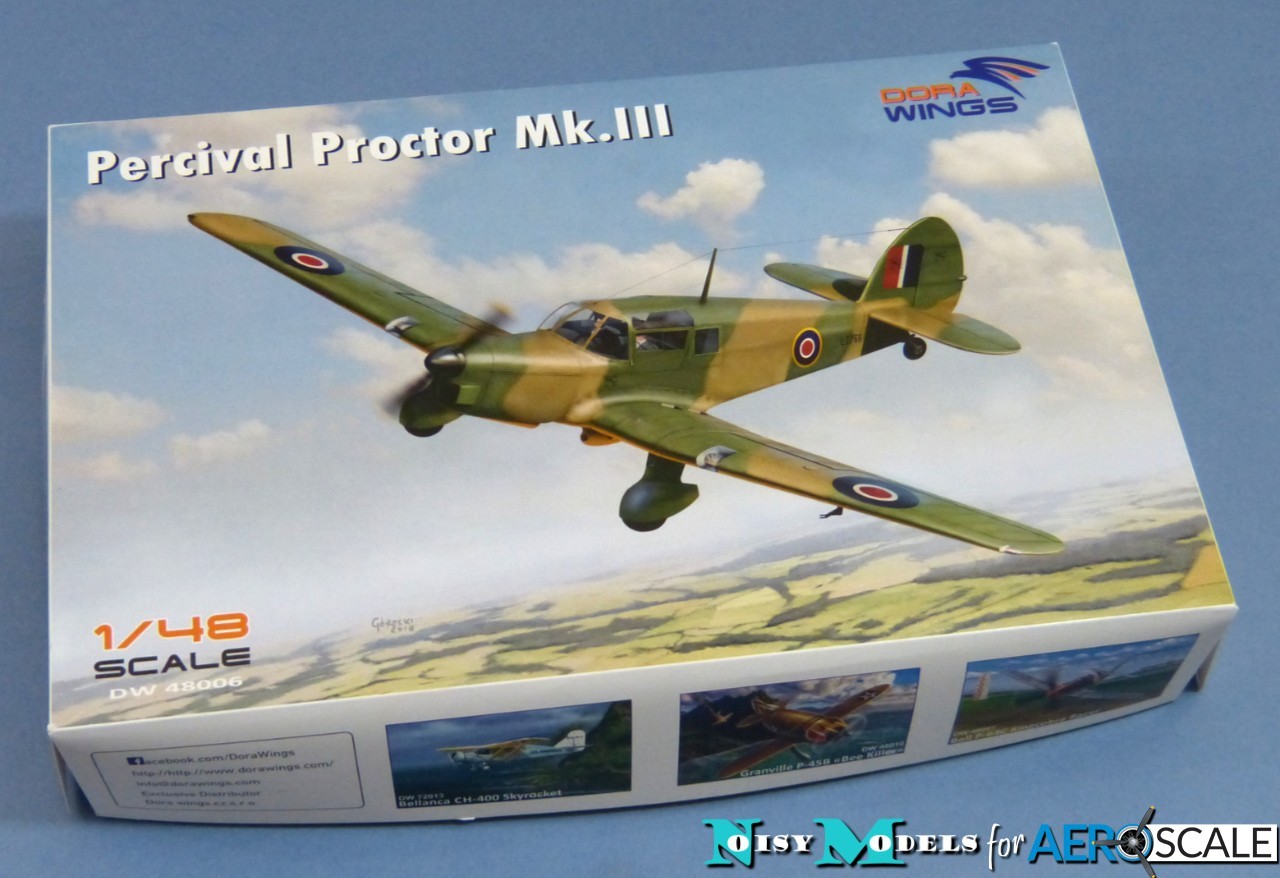
Despite the crucial role they played in WWII, second-line aircraft tend to be overlooked by the major mainstream kit manufacturers - and indeed many modellers - leaving them instead for smaller producers. A classic example is the Percival Proctor which was developed from the pre-war civilian Vega Gull. It first flew soon after the outbreak of war and served in various forms through WWII and until the mid 1950s.
While the initial Proctor closely resembled the Vega Gull and retained its good performance, later marks were larger and heavier with an inevitable detrimental effect. The Proctor served as a communications aircraft and a trainer for radio operators. The prototype was even tested as a stop-gap light bomber in 1940, such was the sense of emergency with the threat of imminent invasion. Altogether, over eleven hundred Proctors were built and they soldiered on in private use well into the 1960sn when they were grounded for safety reasons because of deterioration to their wooden airframes.
Dora Wings have filled the gap left by mainstream manufacturers and produced a small series of 1:48 kits of the Proctor and the Vega Gull. We'll look at the Proctor Mk. III, but much of the review should be applicable to the other kits too.
The Proctor arrives in a compact and attractive top-opening box, with the parts packed in resealable bags. The kit comprises:
96 x grey styrene (including 6 or so used in other boxings)
10 x clear styrene parts
20 x etched brass parts
A sheet of die-cut vinyl painting masks
Decals for 5 x colours schemes

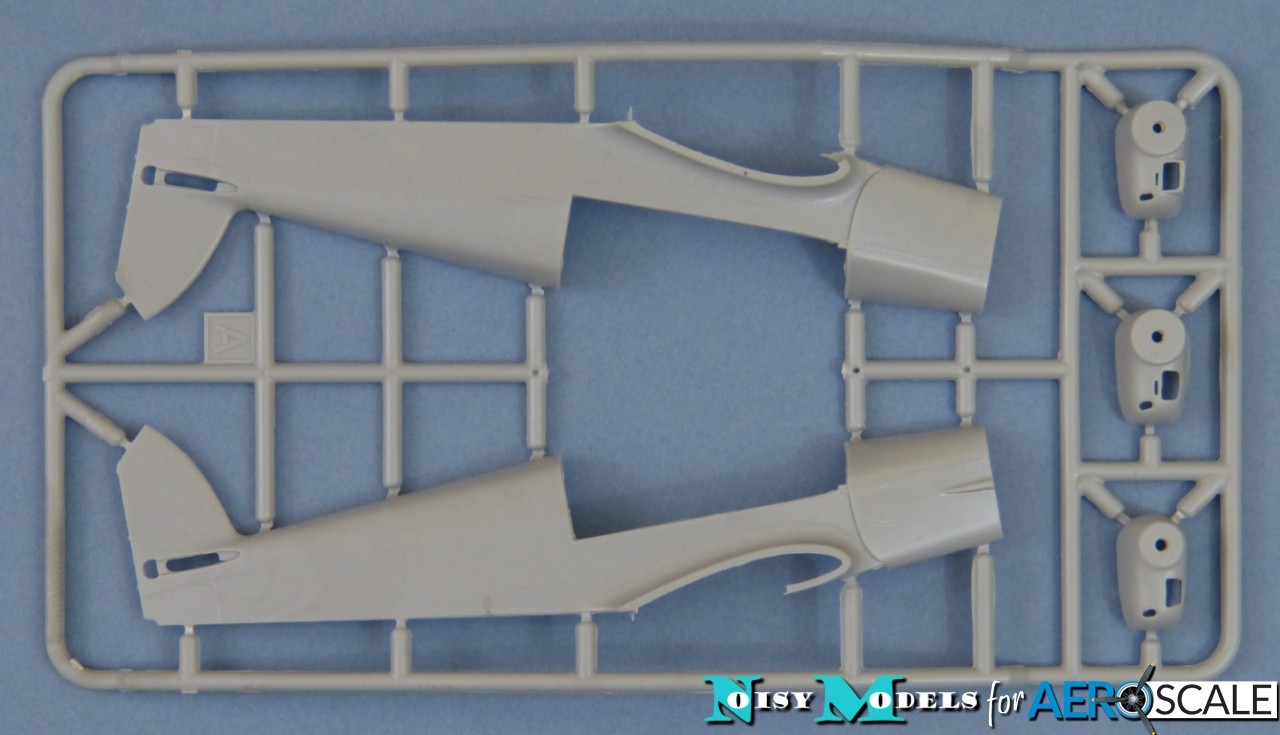
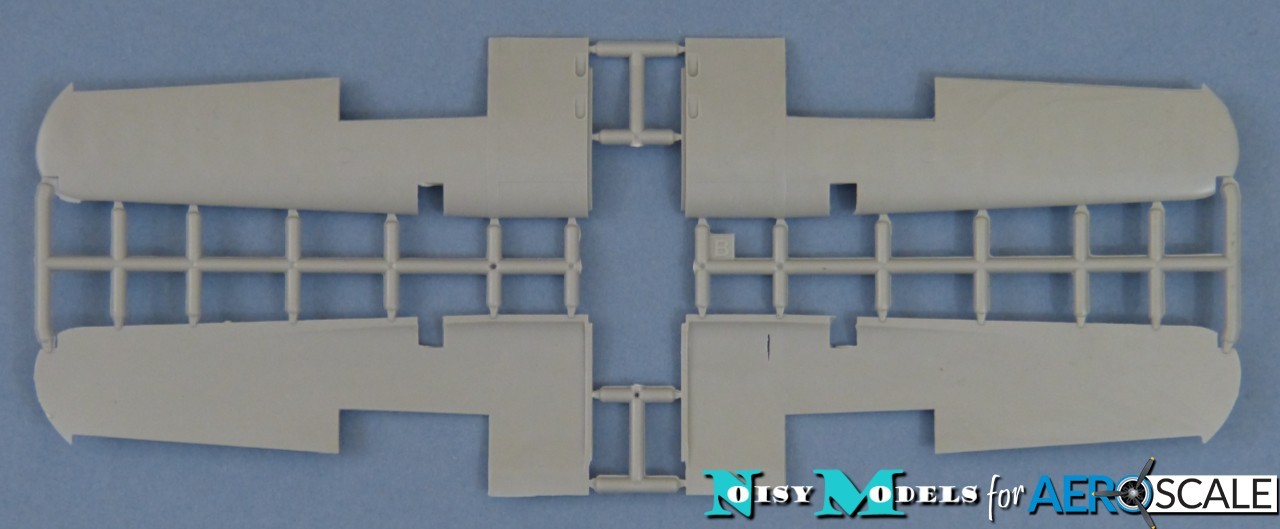
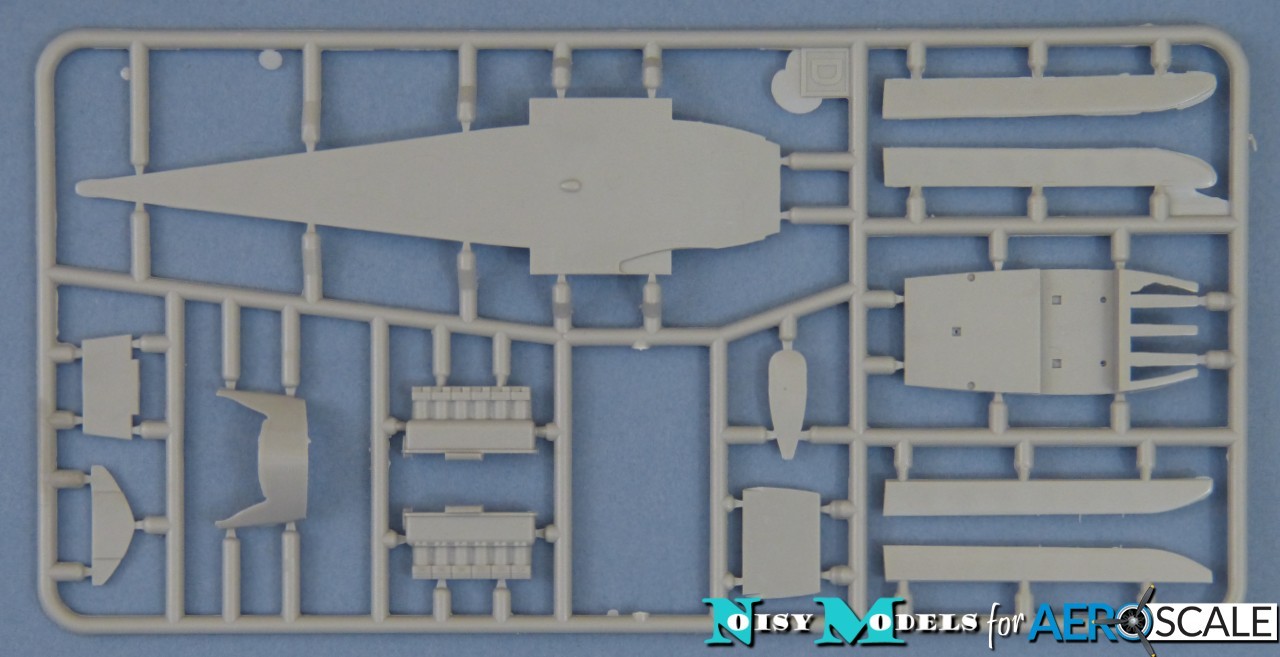
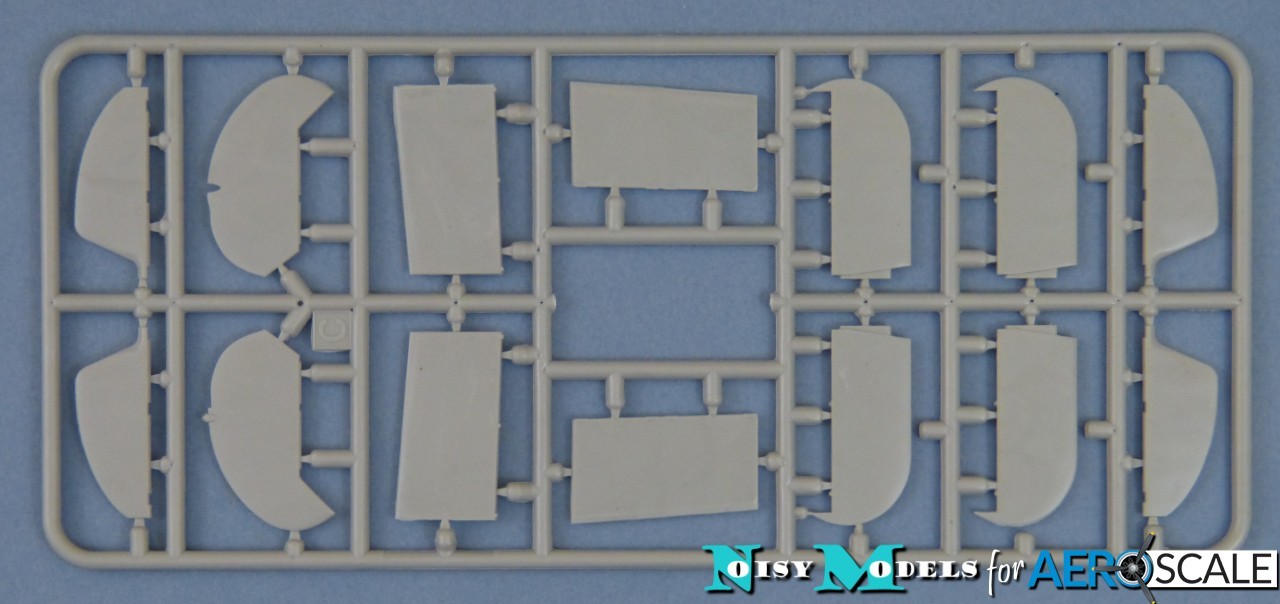

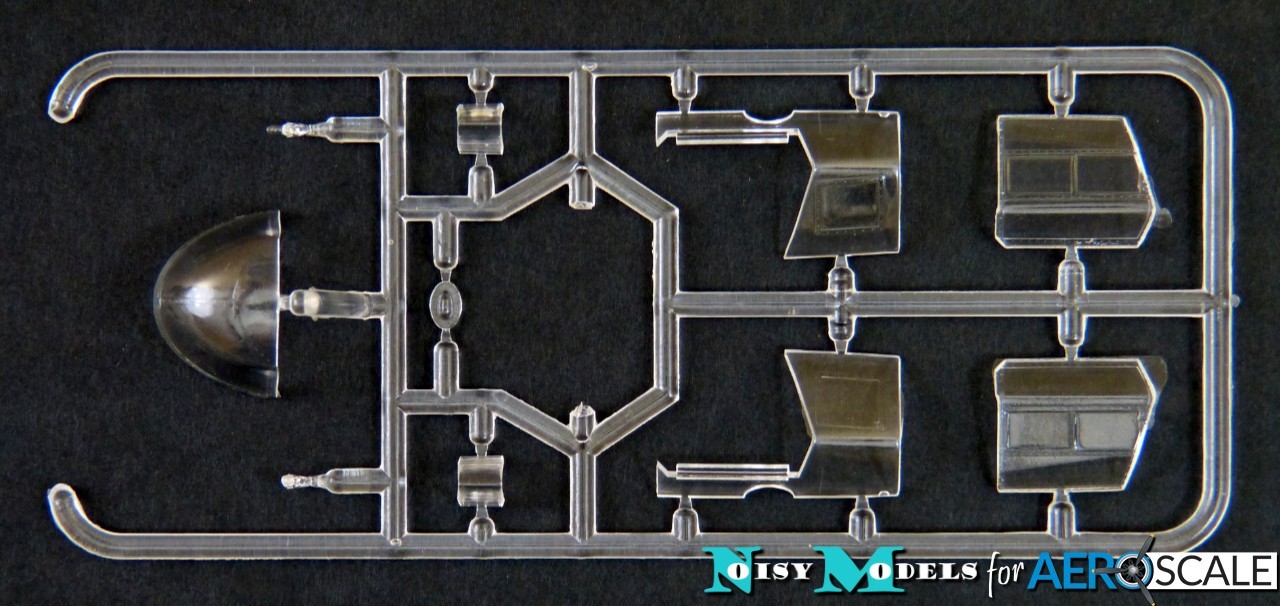
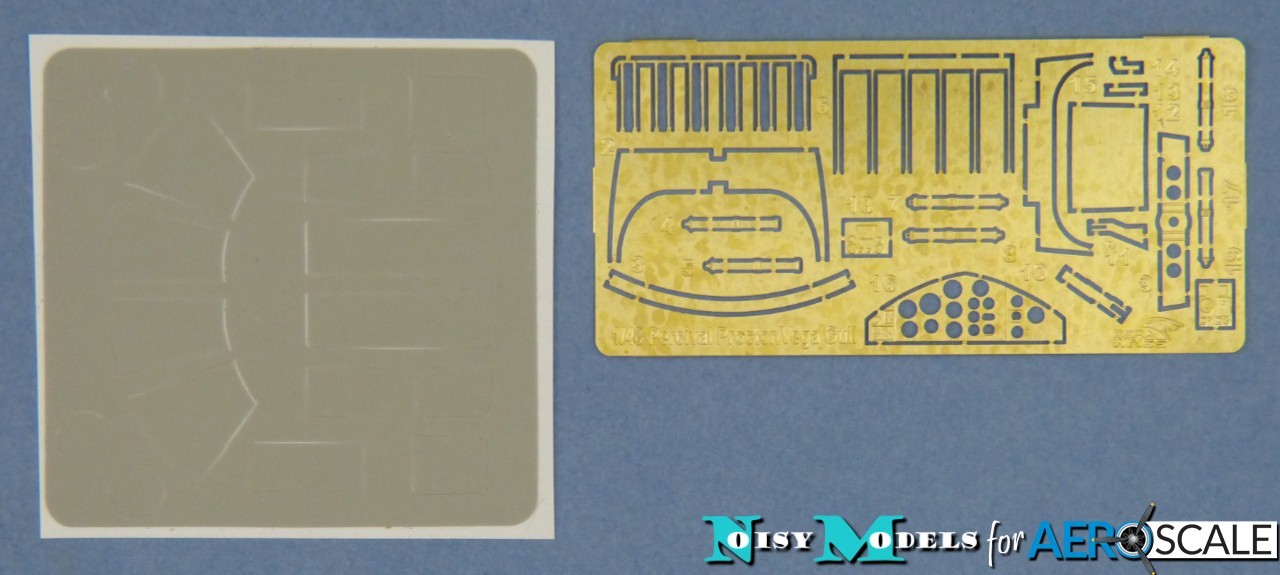
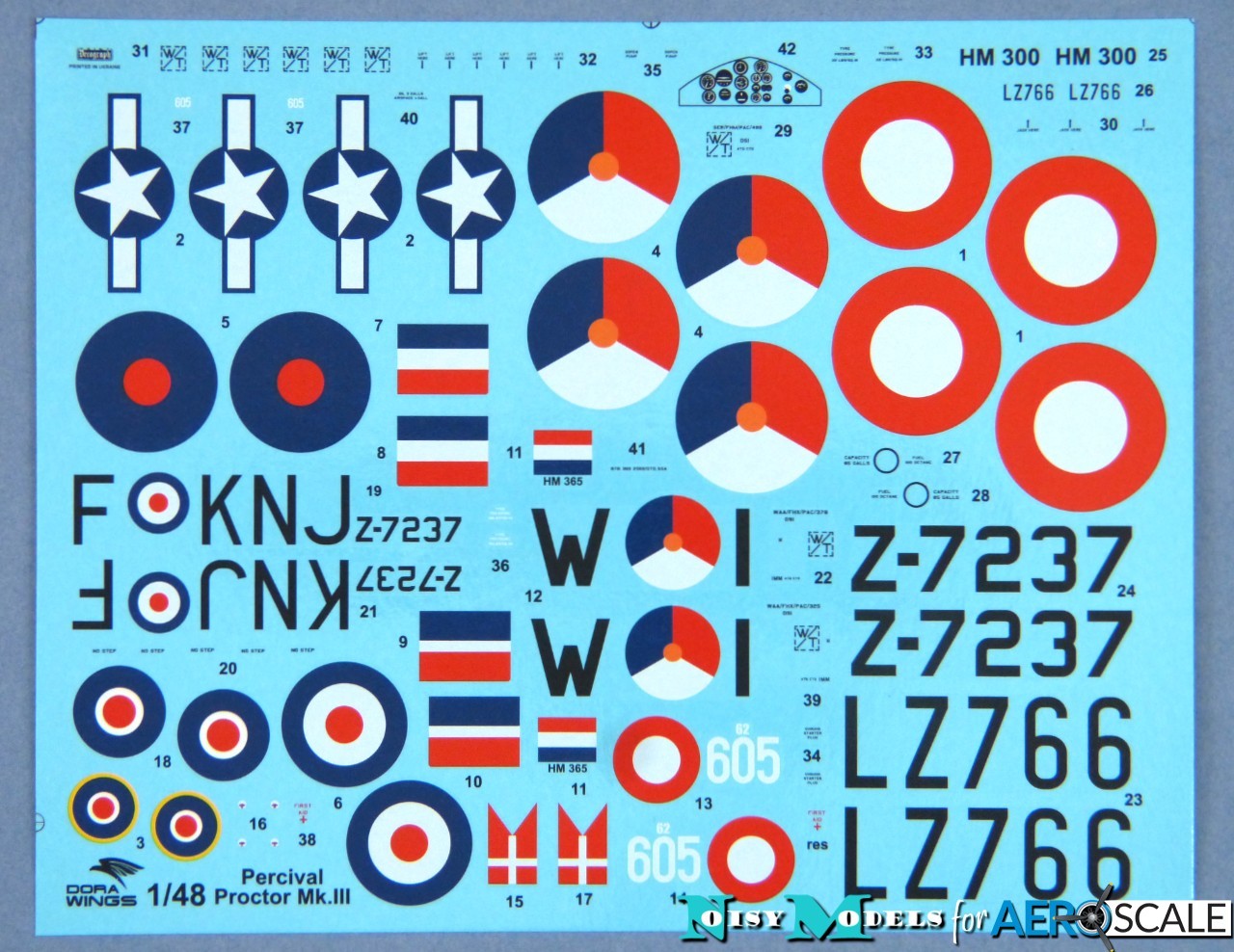
It's important to note that Dora Wings' Proctor is few years old now, so it's not produced to quite the same standard as their recent Vengeance and Thunderbolt kits. Instead, it's what I'd call a "high end short-run" model - light years ahead of some of the short-run kits from 20 or so years ago, but still requiring a bit of extra modelling experience.
That said, the Proctor is nicely produced. There's only a little flash and, in common with other Dora Wings kits, no use of ejector pins on the moulds. I did spot a couple of flaws, however - a short-shot on one of the propeller blades and a blemish on the underside of one of the wings.
The surface finish is nice and smooth, with neatly engraved panel lines, a few raised details, and subtly represented fabric-covered areas.
A dry-assembly isn't really practical due to the breakdown of the main airframe parts. The fuselage is constructed from three pieces, with a separate bottom to allow engraved details and to ensure it's correctly flat. This also saves a centre-line seam that would otherwise have run through the engraving.
The wings are constructed as left and right panels that attach to the fuselage with quite shallow locating "lips". Obviously, it will be crucial to ensure everything is square and true, so it might be worth adding a simple spar under the cockpit floor to add a bit of extra support.


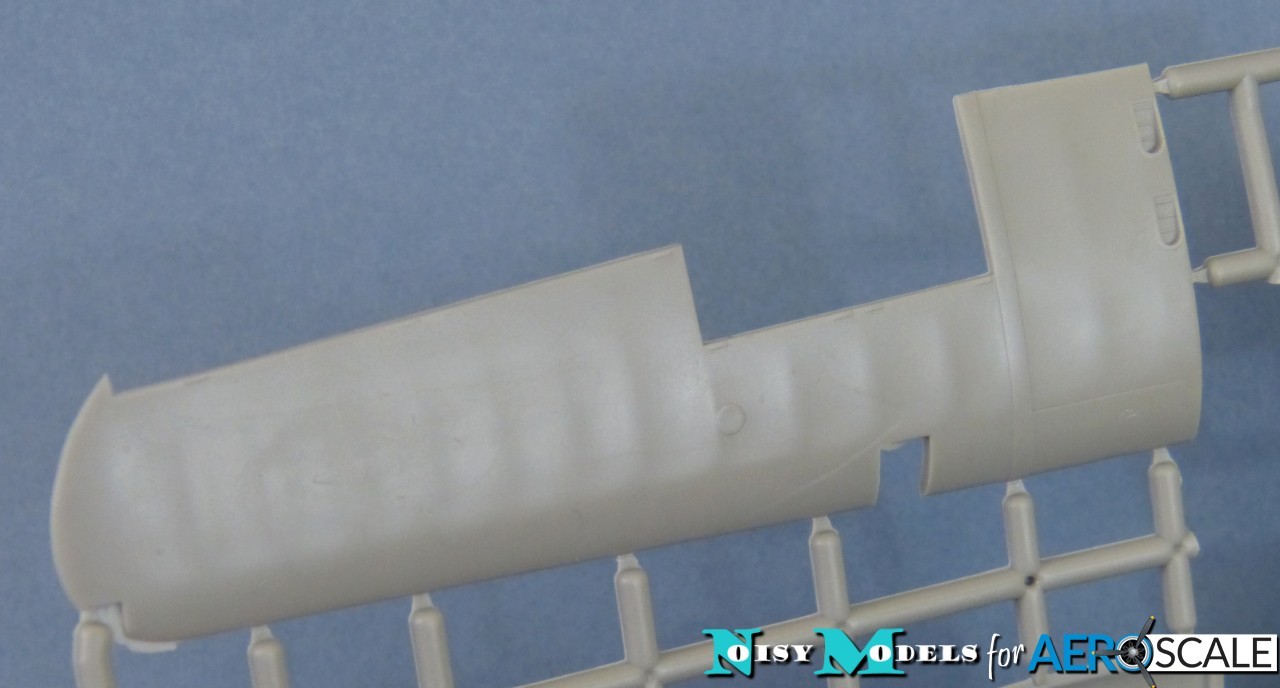
A Few Details
The cockpit is neatly fitted-out with a mix of styrene and photoetched parts. The instrument panel consists of an etched fascia over a crisply printed decal, and it should look excellent with a drop of varnish in each bezel. The three seats are supplied with etched lap-belts, and the radio consoles have brass fascias. Altogether there are 30 parts, and time spent on the interior won't be wasted because the canopy features separate door panels which could be posed open.
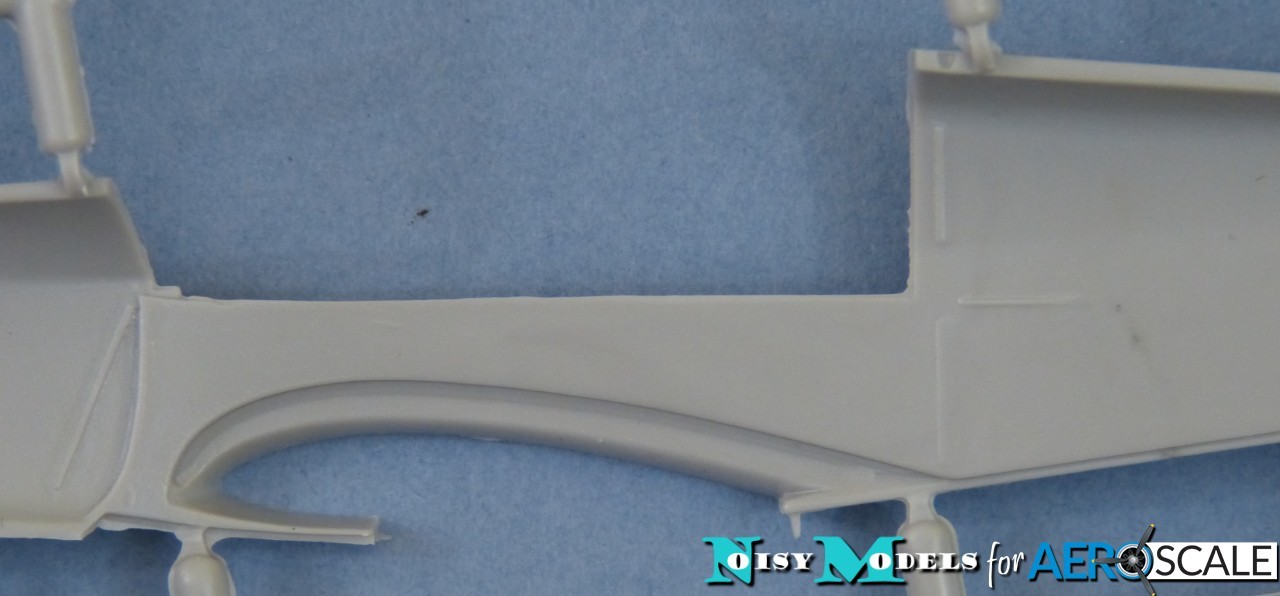
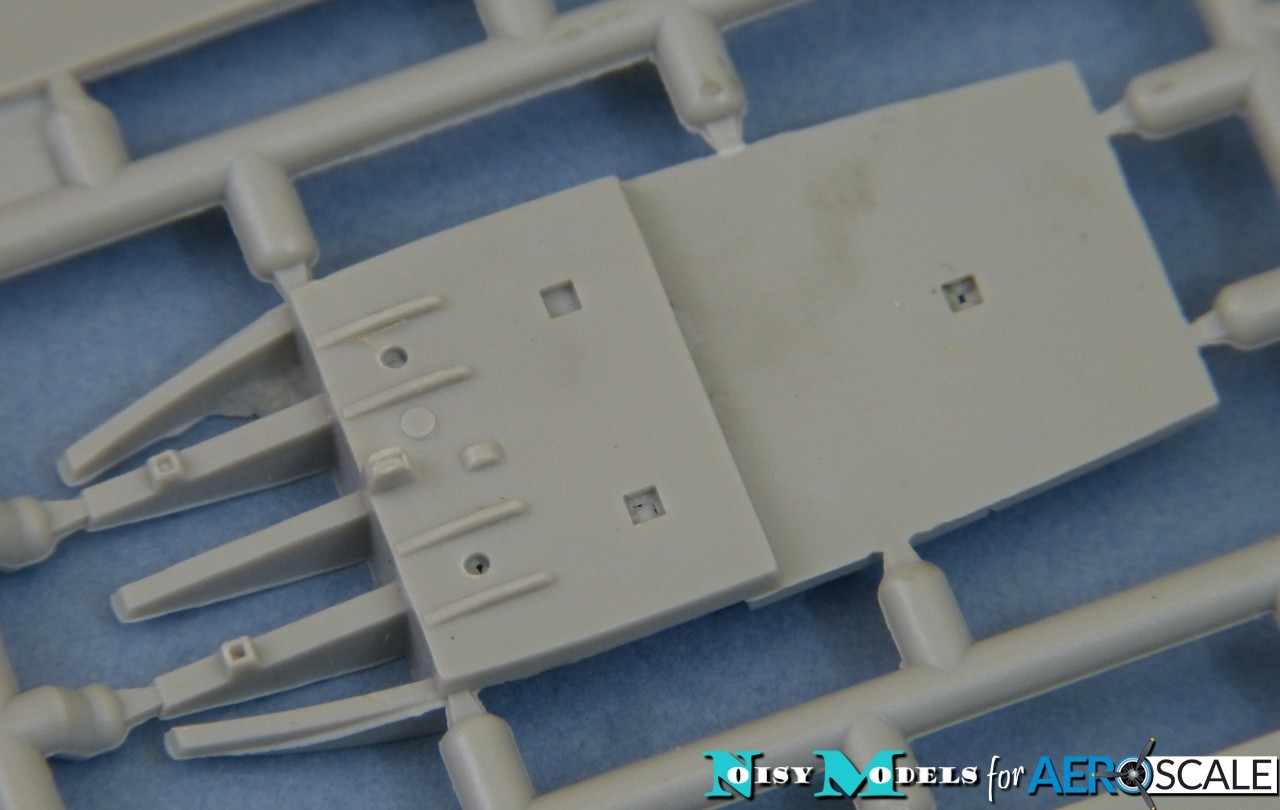
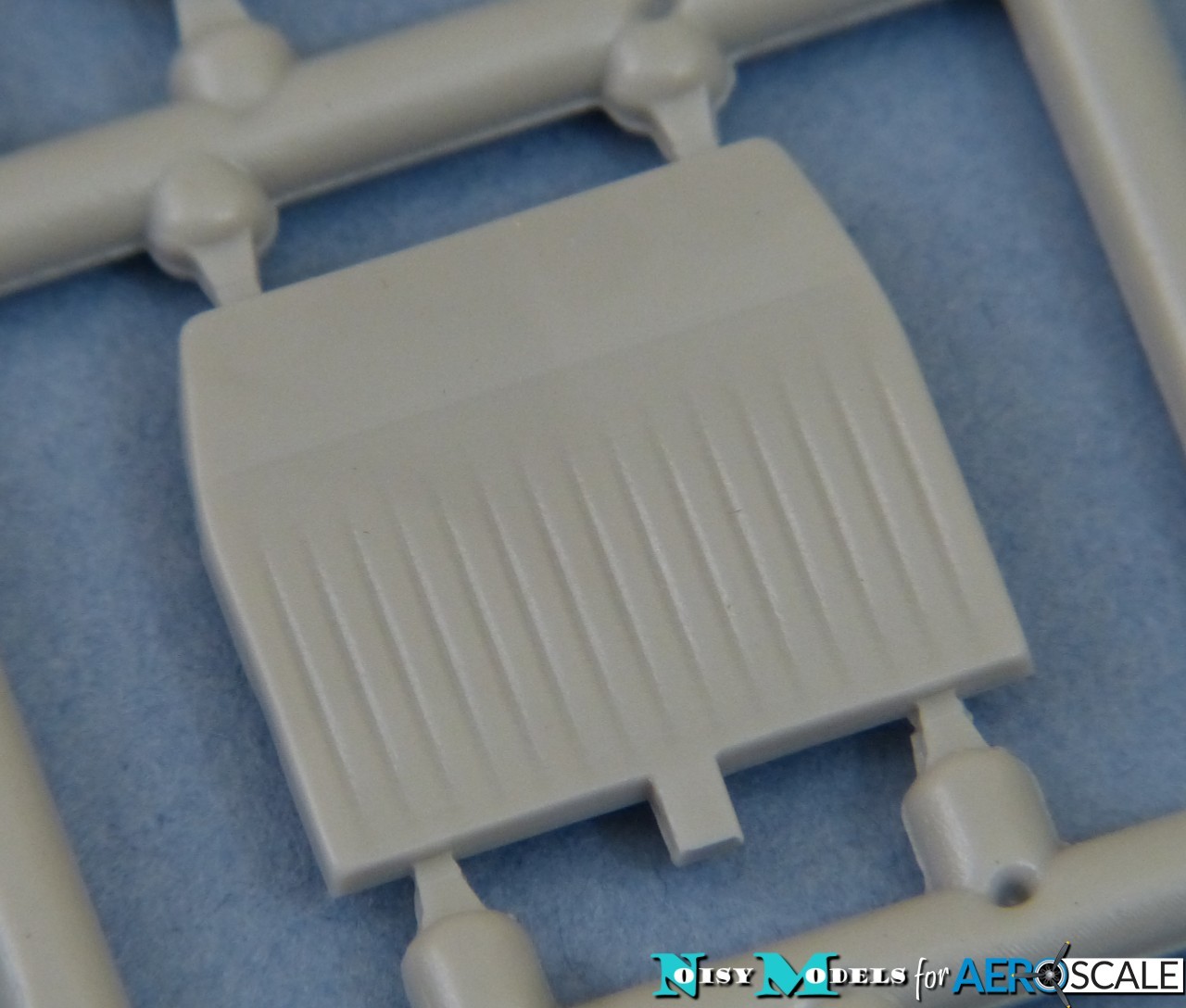
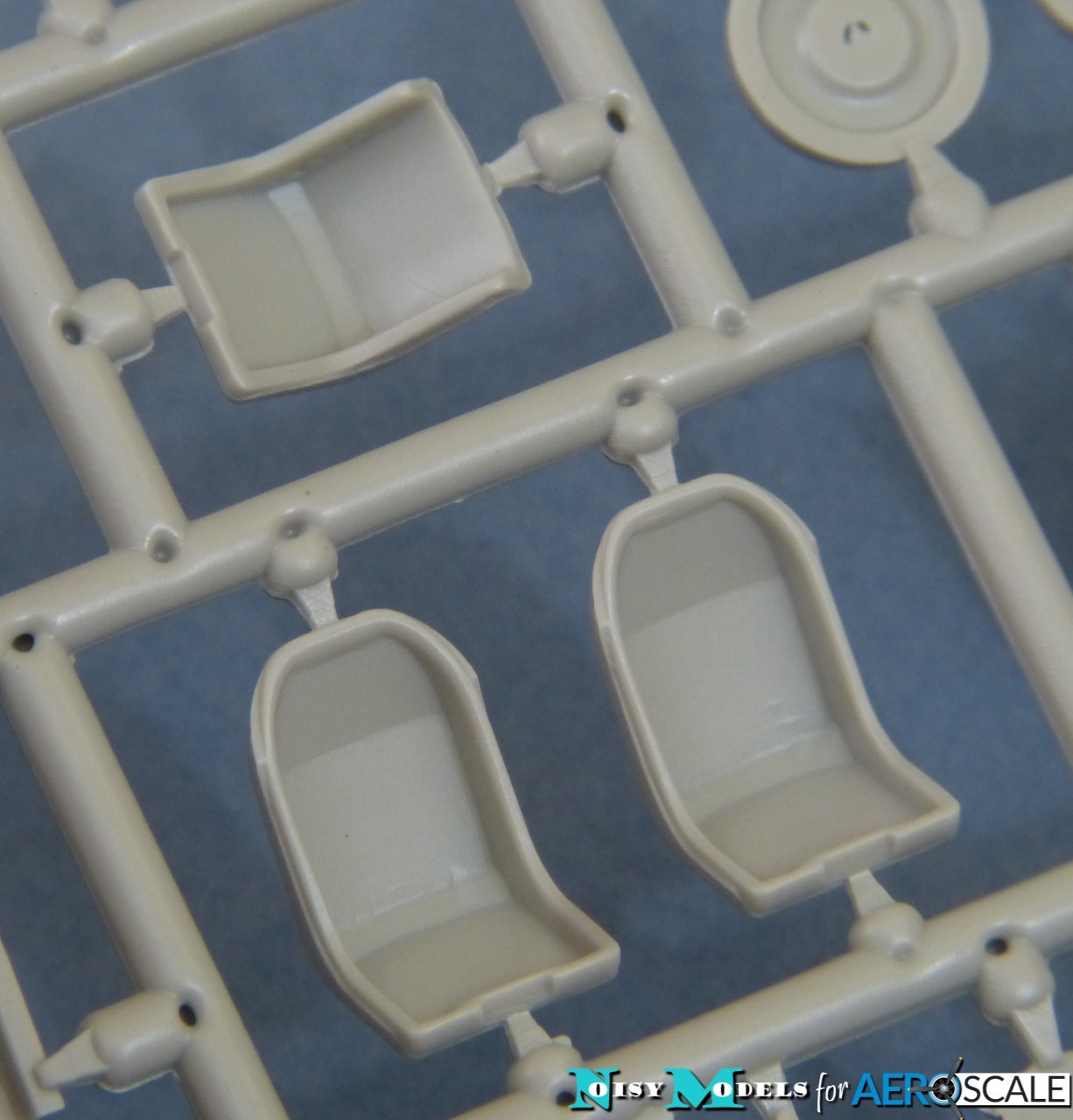
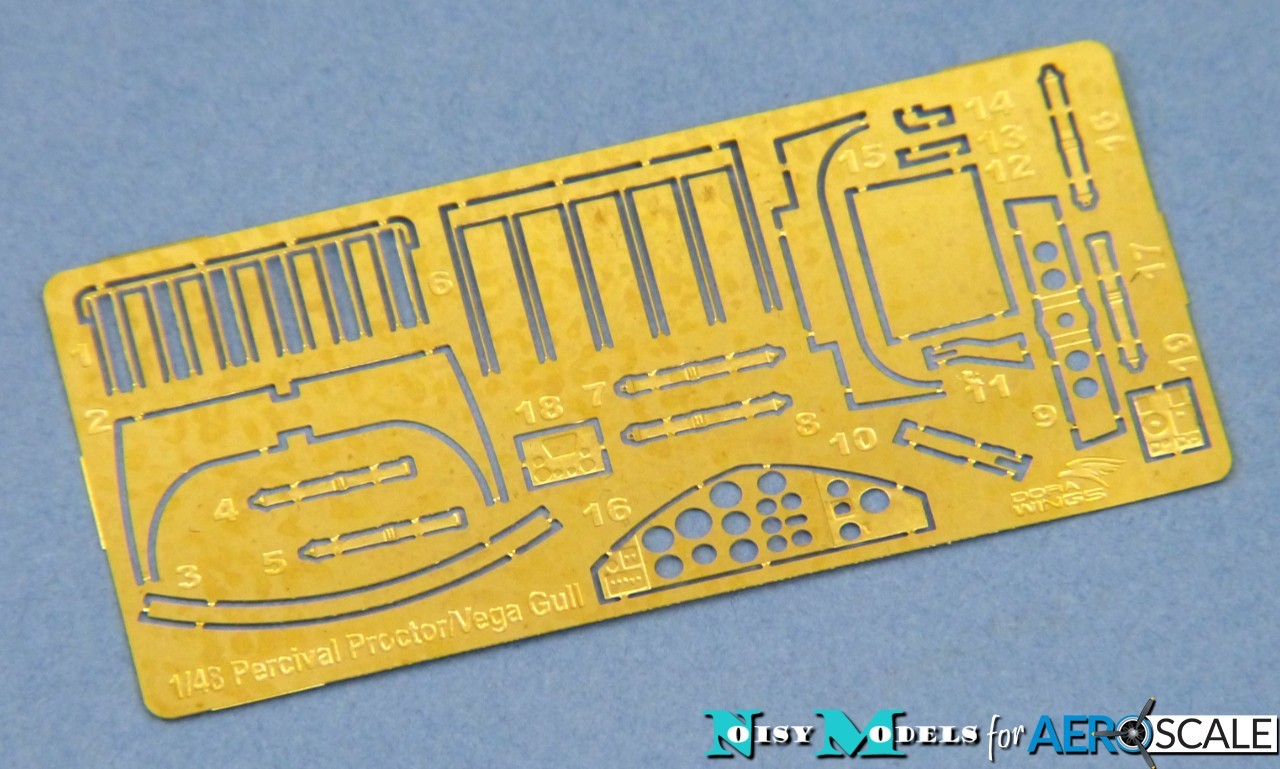

The engine will be largely hidden, but Dora Wings still provide a neat little 9-part unit that features etched details. The exhaust has the outlet split in halves to allow a deep hollow look.
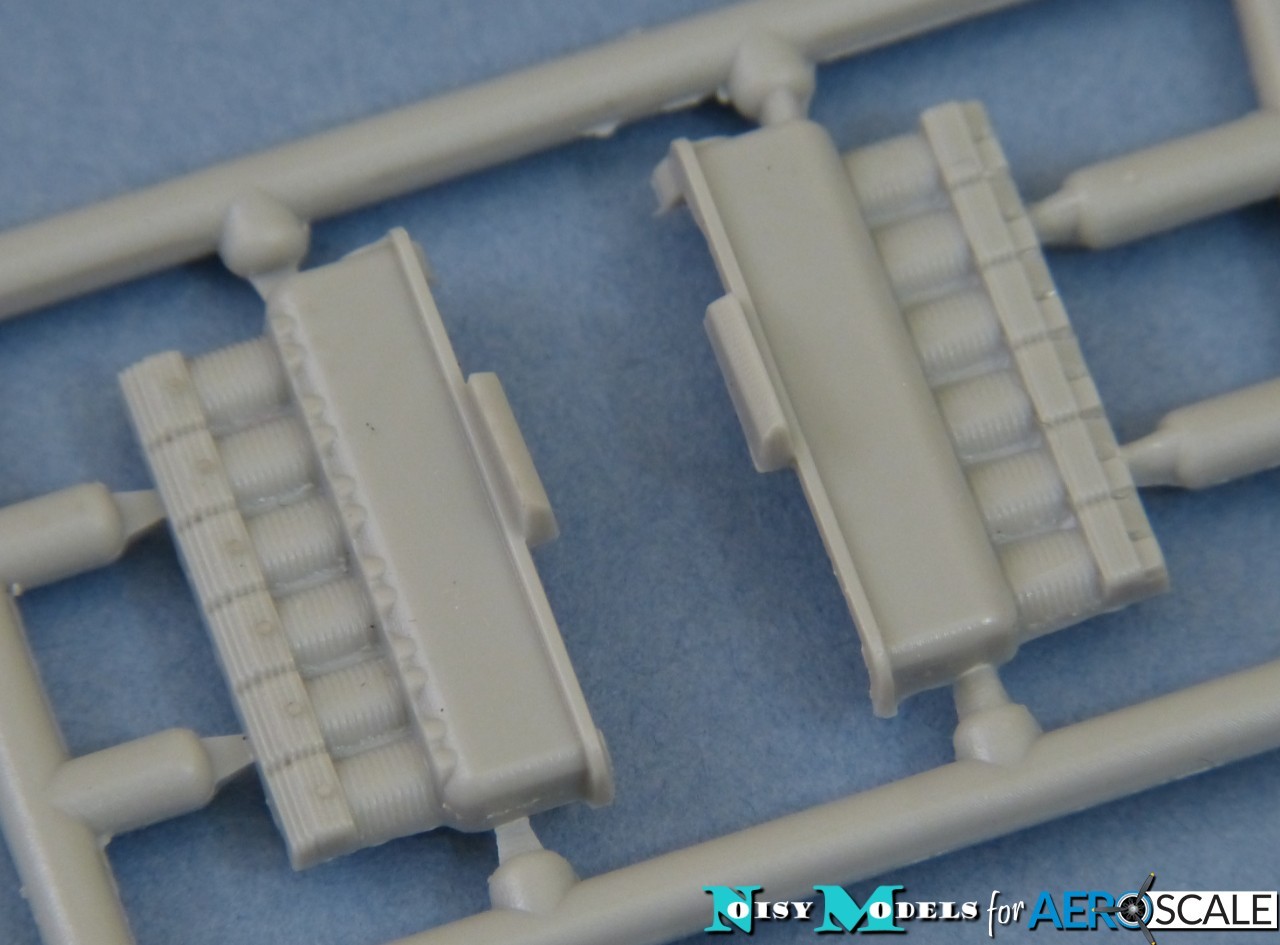
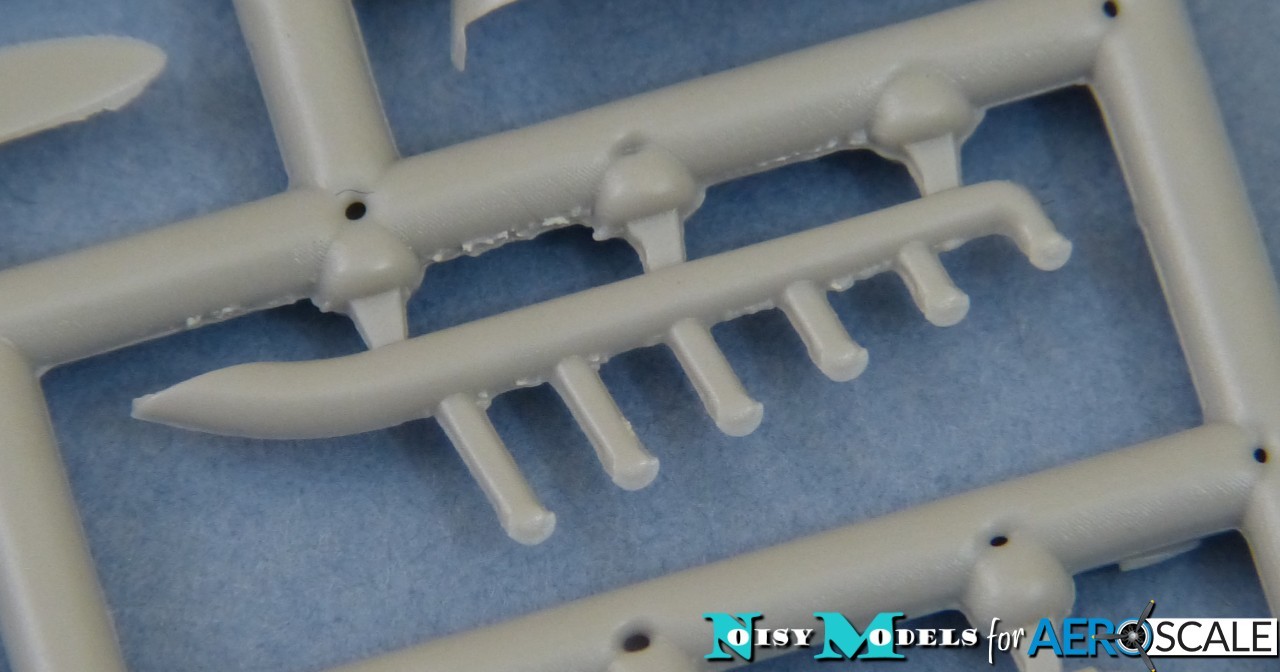
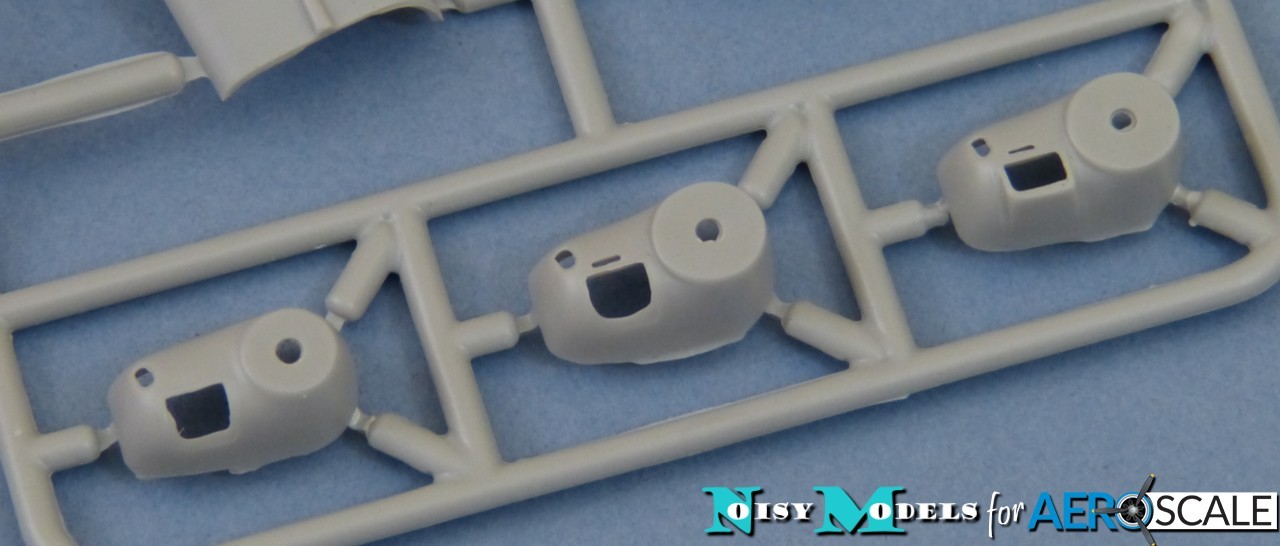
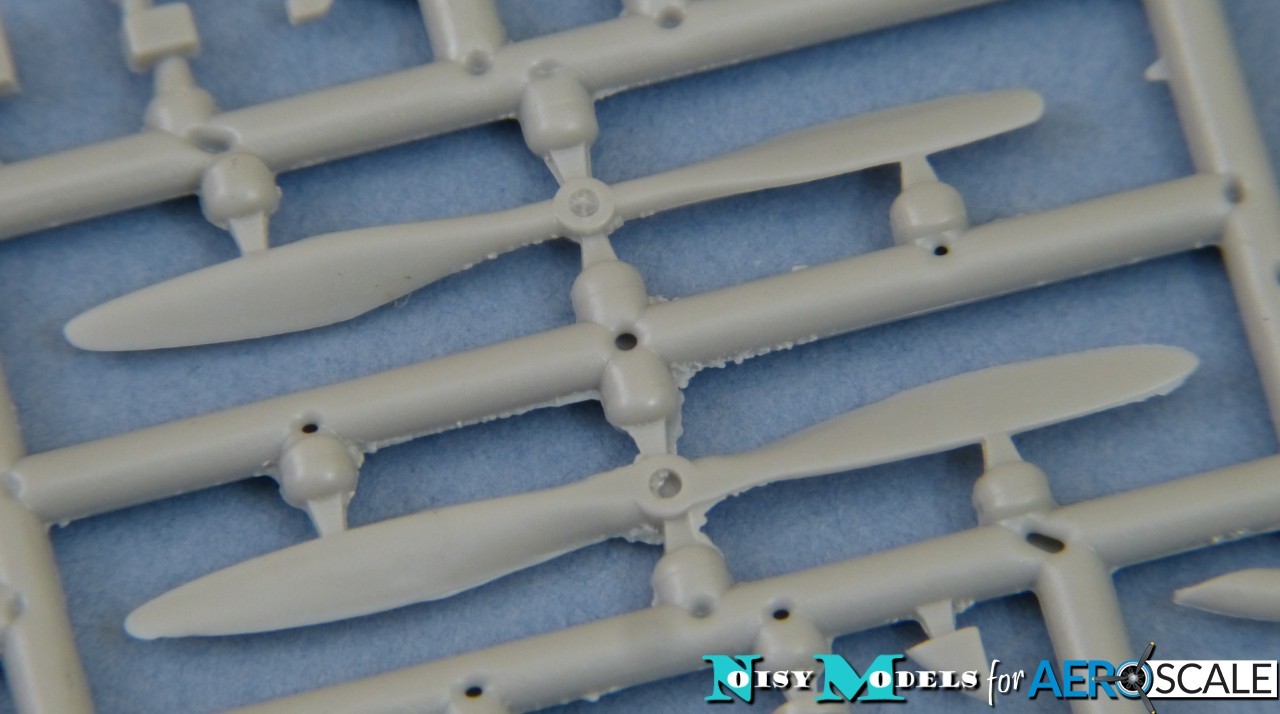
The undercarriage looks very straightforward. The wheels are "unweighted" and moulded in halves, and the mainwheels feature some crisp detail on their hubs. The tailwheel looks quite delicate and has a small attachment point, so using CA adhesive might be a wise option.
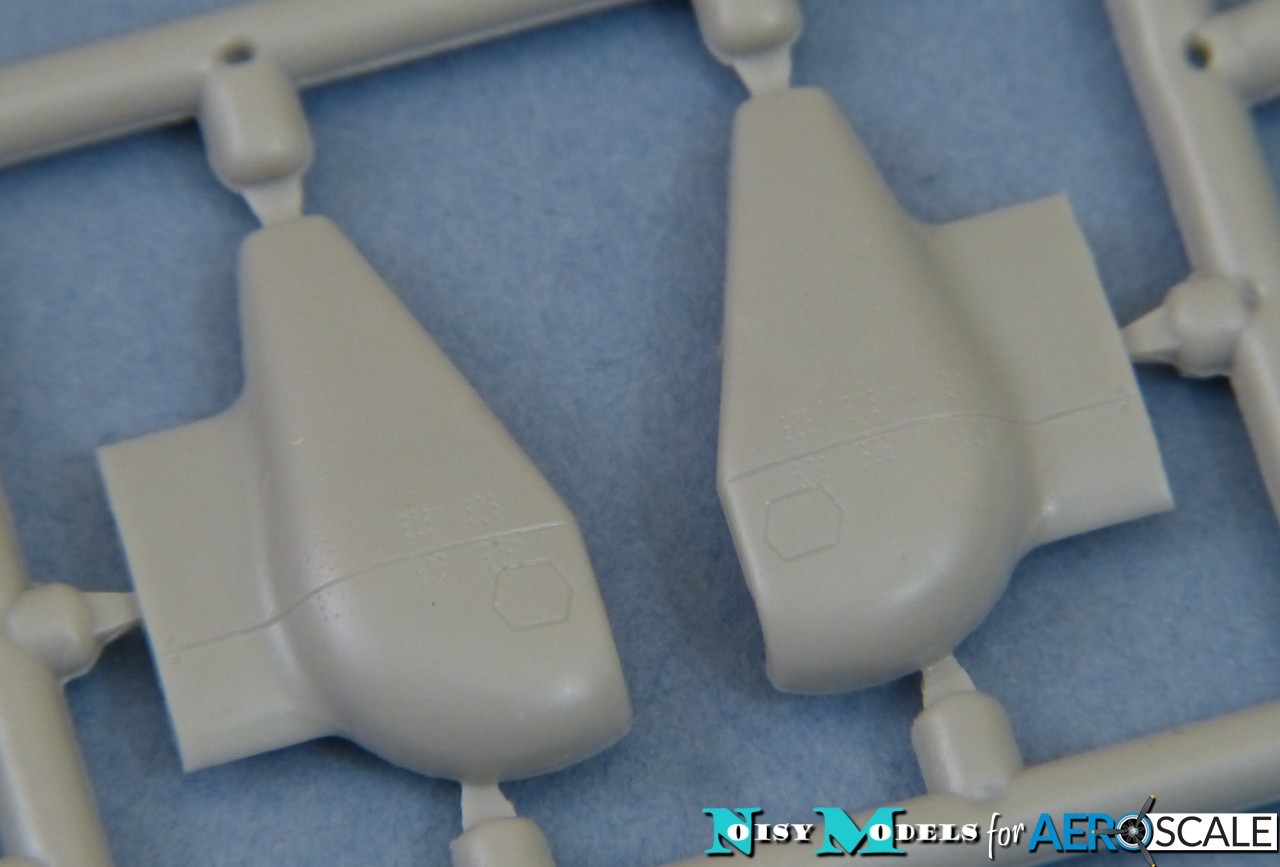
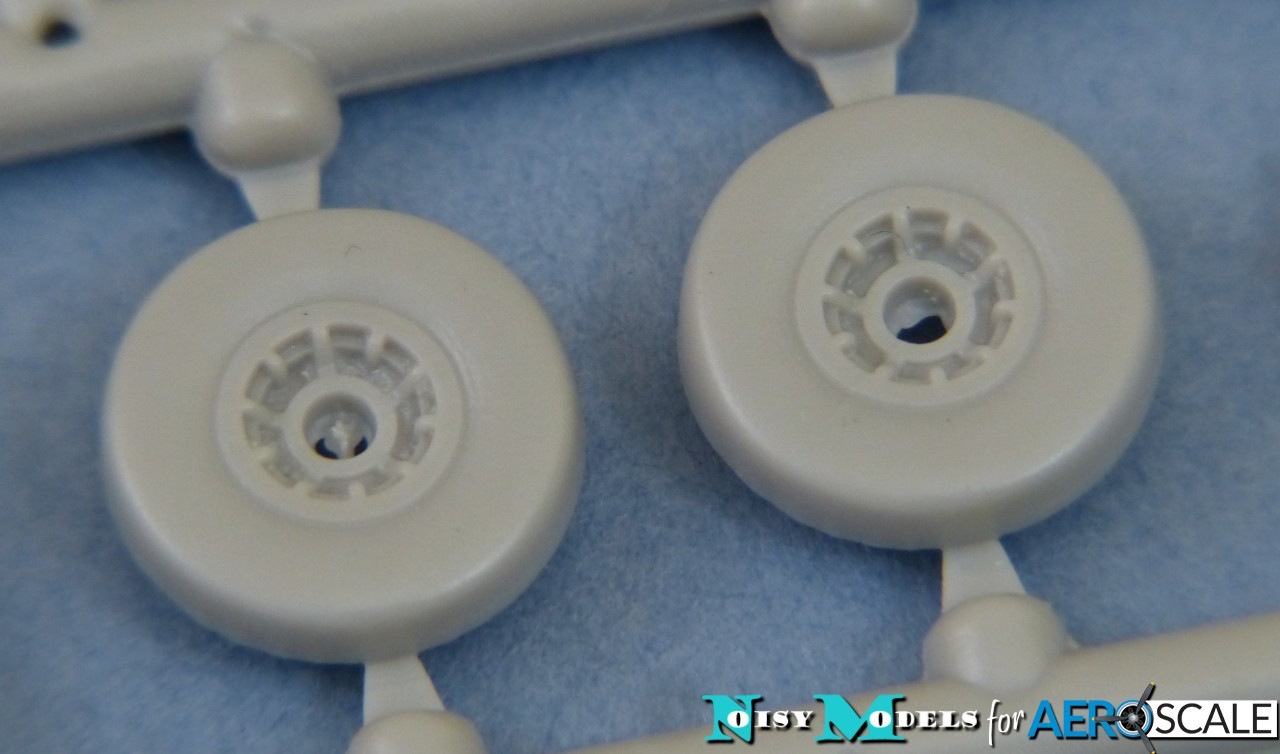
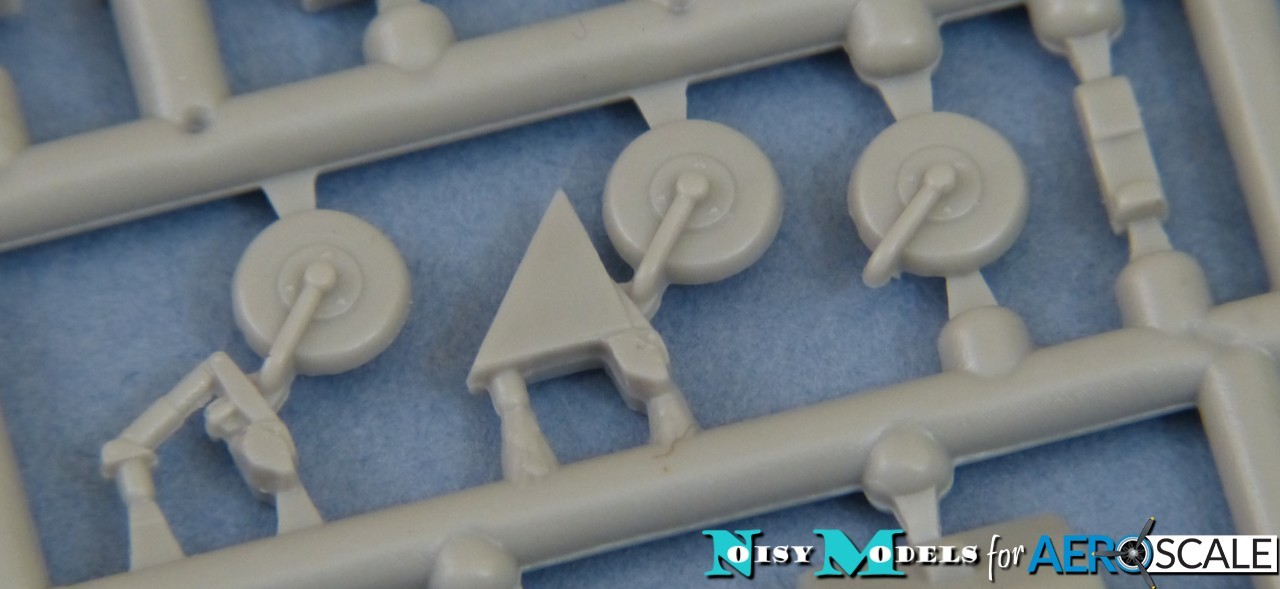
The clear parts are well moulded with good frame detail. As noted above, the door panels are separate. The instructions don't show building them open as an option, but you could do so quite easily. If you do decide to pose the door(s) open, it'll be worth thinning the edges and removing the locating tabs. A full set of vinyl masks its included for the cockpit glazing, landing lamp covers and wheel hubs.

Instructions & Decals
The assembly guide is printed in colour as a 12-page A5 booklet. The diagrams are clearly drawn and the construction sequence is pretty logical, beginning with a number of subassemblies for a total of 20 stages. Dora Wings don't offer any colour suggestions, but there are plenty of photos of Proctors online to use for reference.

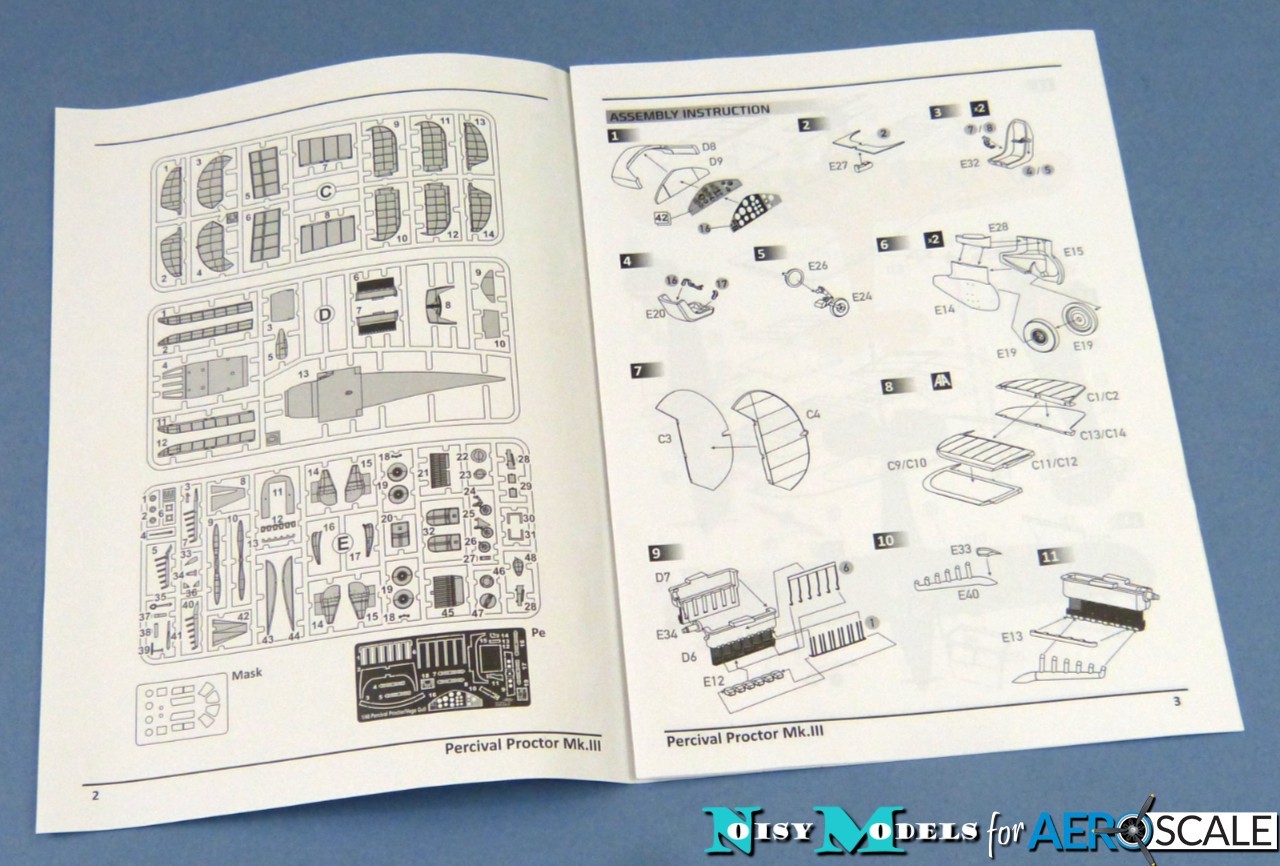
The kit includes decals for 5 colour schemes which offer a really nice variety of options with RAF, USAAF, Danish and Dutch machines in a mix of camouflage and aluminium dope schemes:
Proctor III, s/n HM300, USA, 1945
Proctor III, s/n LZ766 as displayed at the Imperial War Museum, 2017
Proctor III, "605", Royal Danish Air Force, 1946/47
Proctor III, s/n Z7237, RAF, 1942
Proctor III, s/n HM365, "W-I", Royal Netherlands Air Force, 1947
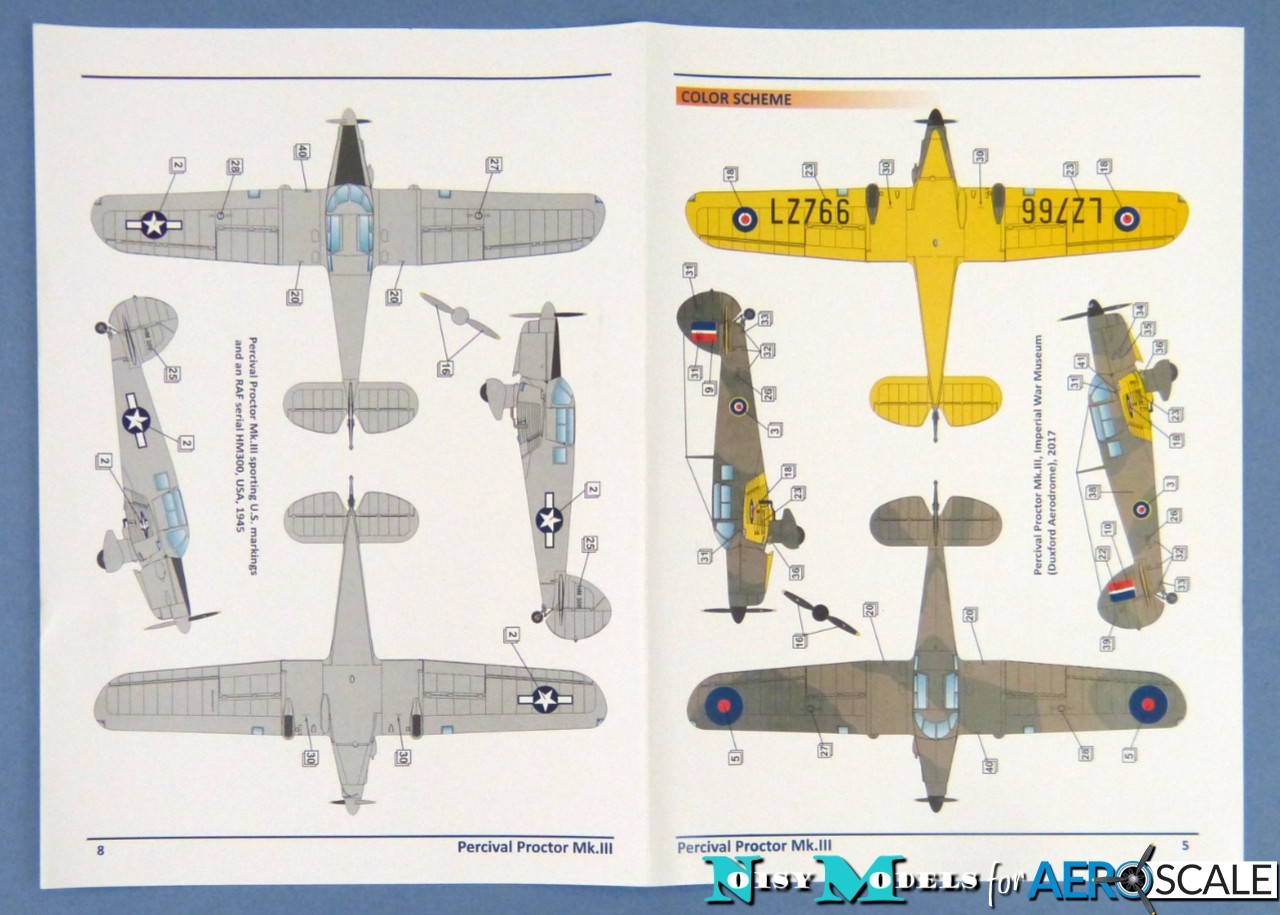
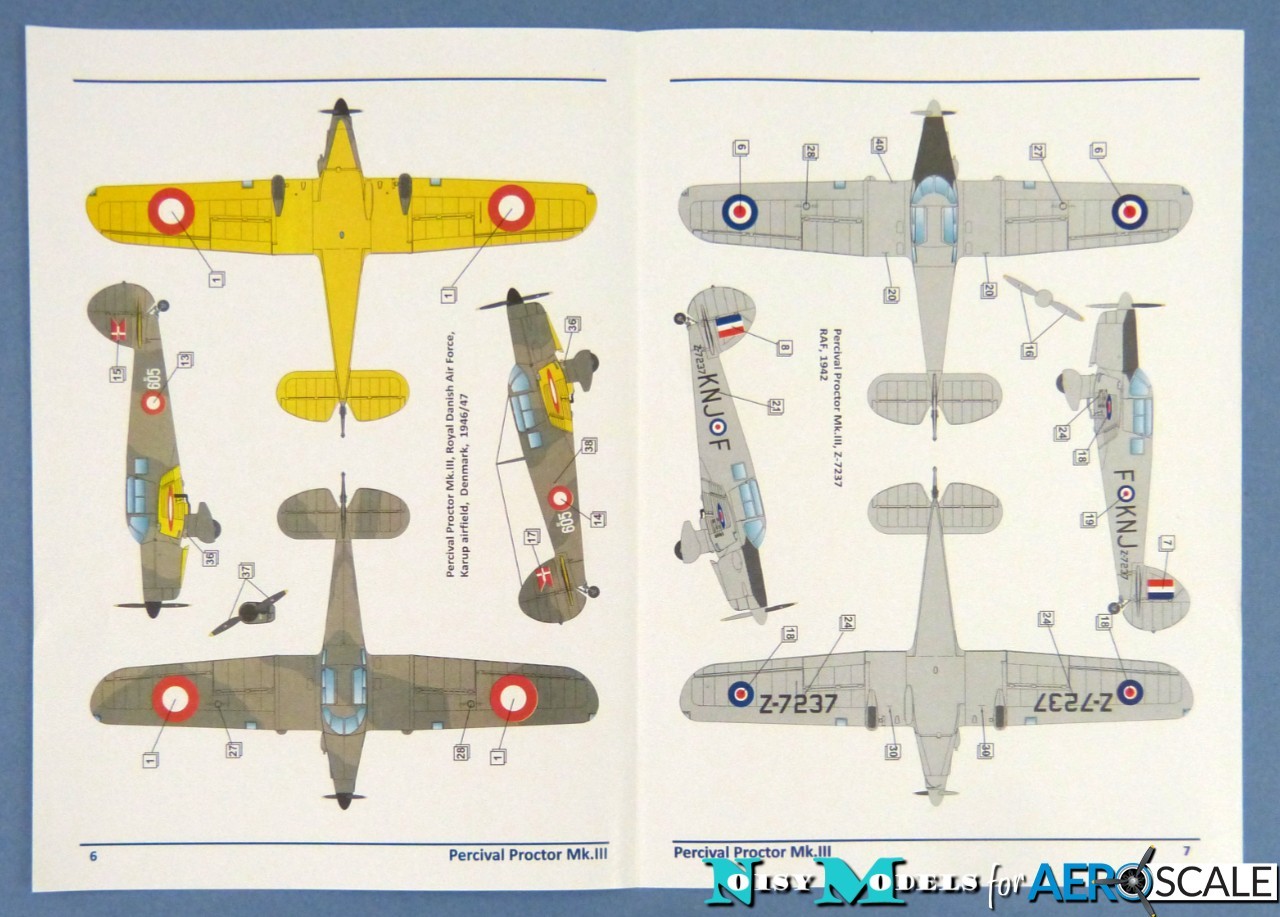
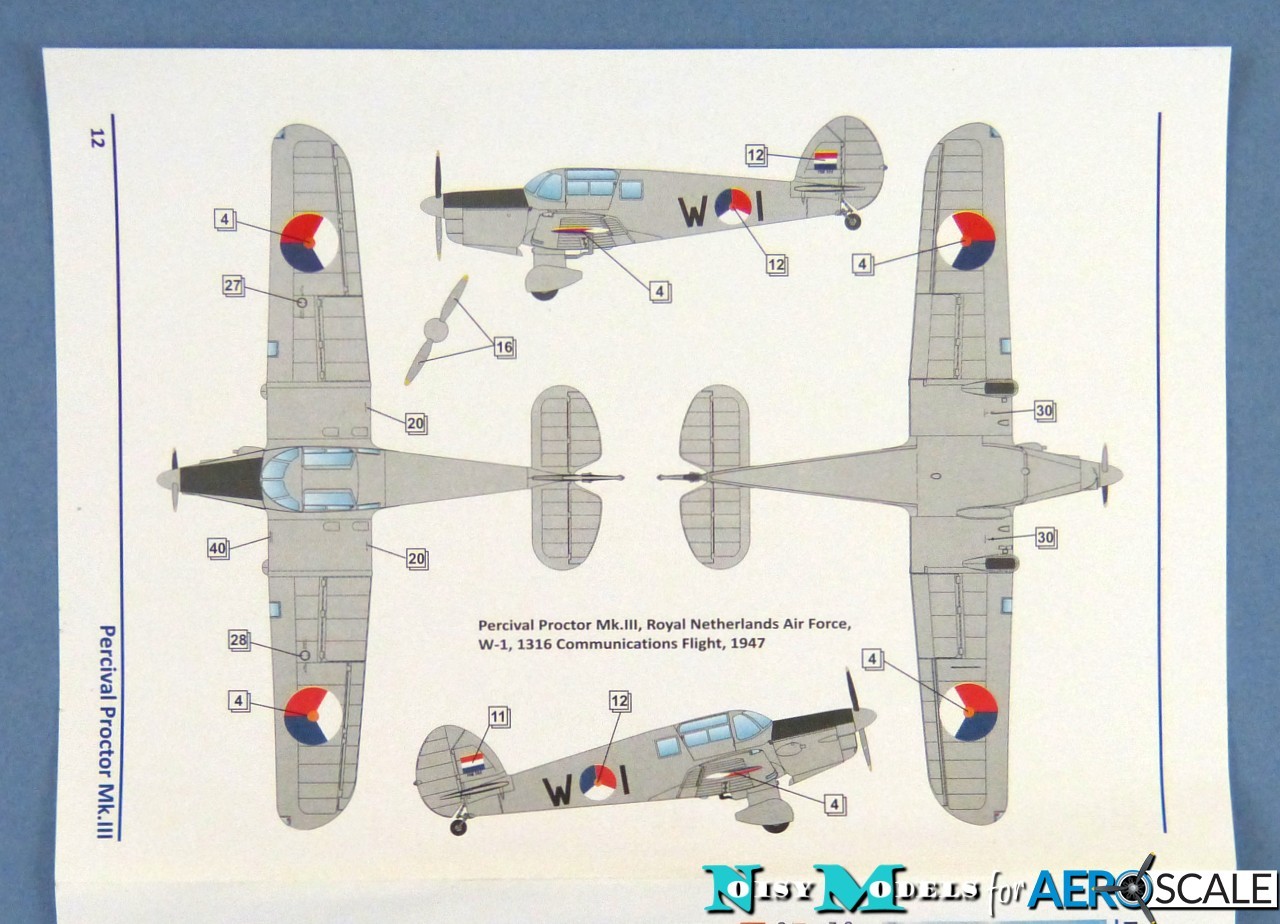
The decals are beautifully printed with precise registration. The red used for the IWM scheme's roundels looks a bit bright for wartime, but it may be correct for how the airframe is displayed. If not, you could always overspray with Dull Red or use aftermarket alternatives. A nice touch is the inclusion of quite a comprehensive selection of servicing stencils.

Conclusion
Dora Wings' Proctor is a lovely little kit. Although it's a few years old now and it predates the sophistication of the company's recent releases, this shouldn't deter anyone with a bit of experience.
I bought my kit from Jadlam Toys & Models for £26.95, which I think represents good value for money for what promises to be a very enjoyable build.
Please remember, when contacting retailers or manufacturers, to mention that you saw their products highlighted here - on AEROSCALE











